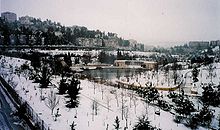
The Hebrew University of Jerusalem is a public research university based in Jerusalem, Israel. Co-founded by Albert Einstein and Chaim Weizmann in July 1918, the public university officially opened in April 1925. It is the second-oldest Israeli university, having been founded 30 years before the establishment of the State of Israel but six years after the older Technion university. The HUJI has three campuses in Jerusalem and one in Rehovot. Until 2023, the world's largest library for Jewish studies—the National Library of Israel—was located on its Edmond J. Safra campus in the Givat Ram neighbourhood of Jerusalem.

Mount Scopus is a mountain in northeast Jerusalem.

Beit HaKerem is a largely secular upscale neighborhood in southwest Jerusalem. It is located between Kiryat Moshe to the northwest and Bayit VeGan to the south. Beit HaKerem has a population of 15,000.
Michael Zohary was a pioneering Israeli botanist.

Ramat Eshkol is an Israeli settlement and neighborhood in northern East Jerusalem. It was built on land captured from Jordan in the Six-Day War and occupied by Israel since 1967, and was the first settlement built in East Jerusalem beyond the Green Line by Israel. The international community considers Israeli settlements in East Jerusalem illegal under international law, but the Israeli government disputes this. As of 2017, about 8,975 people live in the neighborhood.

The National Library of Israel, formerly Jewish National and University Library, is the library dedicated to collecting the cultural treasures of Israel and of Jewish heritage. The library holds more than 5 million books, and is located in the Government complex near the Knesset.
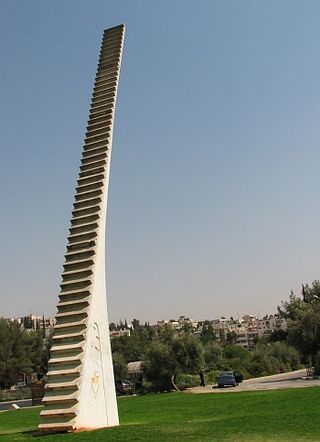
Givat Mordechai is a Jewish neighborhood in southwest-central Jerusalem, midway between the neighborhoods of Nayot and Malcha. The neighborhood was named after an American philanthropist, Maxwell (Mordechai) Abbell of Chicago.

Neve Sha'anan is a small neighborhood in central Jerusalem. It is located between the Israel Museum and the Givat Ram campus of the Hebrew University of Jerusalem, bordering Nayot.

Givat Ram is a neighborhood in central Jerusalem. It is the site of Kiryat HaMemshala, which includes many of Israel's most important national institutions, among them the Knesset, the Israel Museum, the Supreme Court, Bank of Israel, Academy of the Hebrew Language, National Library, one of the campuses of the Hebrew University of Jerusalem, and many government ministries' offices.

Nayot is a neighborhood in south-central Jerusalem established in 1960 by a group of English-speaking immigrants. The neighborhood's population of 2,223 includes a mix of families, young children, and older adults. Its most notable landmark is likely the Jerusalem Botanical Gardens.
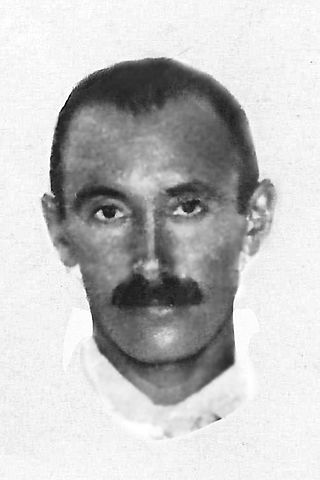
Alexander Eig was a botanist, one of the first plant researchers in Israel, head of the department of Botany at the Hebrew University in Jerusalem and co-founder of the National Botanic Garden of Israel on Mount Scopus campus.
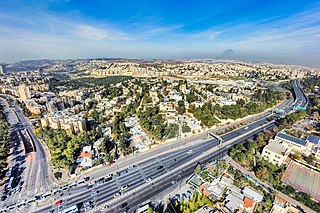
Givat HaMivtar is an Israeli settlement and a neighborhood in East Jerusalem established in 1970 between Ramat Eshkol and French Hill. It is located on a hill where an important battle took place in the Six Day War. Archaeological excavations have revealed important ancient Jewish tombs in the region. Givat Hamivtar was one of the first "Build Your Own Home" neighborhoods in Jerusalem.

The Rabbi Dr. I. Goldstein Synagogue is a synagogue on the Edmond J. Safra Givat Ram campus of the Hebrew University in Israel named in honor of Rabbi Israel Goldstein, an American-born Israeli rabbi, author, and Zionist leader. Designed by two Israeli architects—the German-born Heinrich Heinz Rau and the Brazilian-born David Resnick—it has been listed as one of the "ten most beautiful synagogues in Israel," and called "without a doubt, a landmark in local architecture."

The Nature Park & Galleries, is the “open-air campus museum” of the Hebrew University of Jerusalem, located on the University's Edmund J. Safra Science Campus in Jerusalem, Israel.
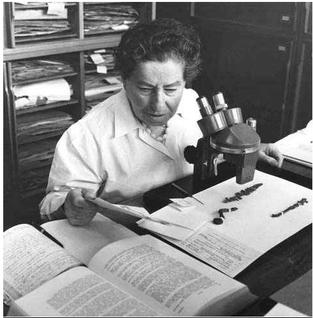
Naomi Feinbrun-Dothan was a Russian-born Israeli botanist, who became part of the academic staff at the Hebrew University of Jerusalem. She studied the flora of Israel and published dozens of articles and several analytical flora books. Just after her 91st birthday, she received the 1991 Israel Prize for her unique contribution to the Land of Israel studies.

Noga Hareuveni (1924–2007) was an Israeli botanist and scholar of Judaic studies. In 1994 Noga Hareuveni was awarded the Israel Prize for his leading role in the creation of the Biblical garden and nature preserve named Neot Kedumim.
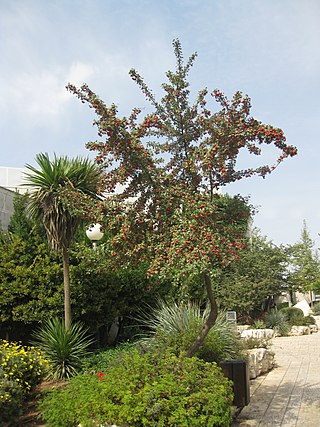
National Botanic Garden of Israel Hebrew: הגן הבוטני לצמחי ארץ ישראל ע"ש מונטג'יו למפורט), is a botanical garden located on the Mount Scopus campus of the Hebrew University of Jerusalem. Its herbarium and Institution Code is HUJ. It covers an area of 25 dunams and contains 950 varieties of plants, 40% of them wild.
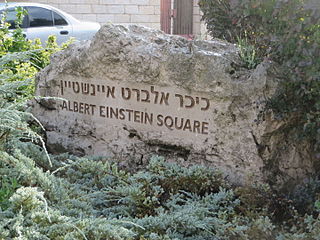
Albert Einstein Square is a public square in Jerusalem, named for the physicist Albert Einstein. It is located in the Kiryat Shmuel neighborhood, on the grounds of the Council for Higher Education in Israel, Israel Academy of Sciences and Humanities, and Van Leer Jerusalem Institute.

Albert Einstein Archives refers to an archive on the Givat Ram campus of the Hebrew University of Jerusalem in Jerusalem, Israel housing the personal papers of 20th century physicist Albert Einstein.





